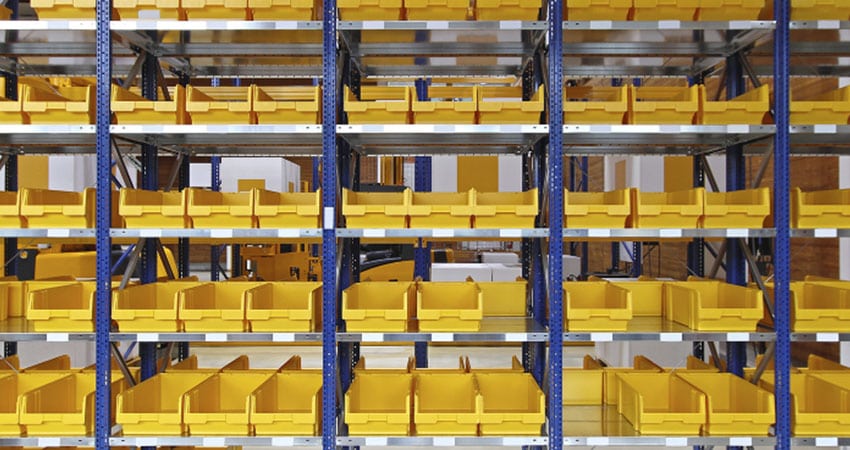There is no end to the process of reducing labor, saving time, making better use of ecommerce fulfillment center space and reducing costs and errors. To be competitive, flexible and survive in these turbulent times, continuous process improvement is critical, taking into account work processes within a facility, and the overall supply chain.
There are huge benefits to be gained when you look at processes, systems, layout and use of space in totality. What changes to each can be made which positively affect their use, integration and costs?
Most ecommerce fulfillment costs are fixed, while the labor costs of picking, packing, receiving, put away, shipping and returns are variable, changing by season and by week. Process change in most fulfilment and distribution centers should focus on labor, one of the biggest factors operations managers have control over.
Excluding transportation, major expense categories include direct and indirect labor, total facility costs (building, systems, automation, utilities) and packing materials. In many operations labor is more than 50% of the total cost, with transportation larger than all other costs combined.
Here are 9 ways to make your ecommerce fulfillment improvement projects successful:
Use Metrics as Indicators
From today’s IT systems, you can get a myriad of data points. However, which are indicators of the operations that lead to taking action? This workbook shows basic productivity data ecommerce warehouses should monitor for department and employee productivity.
Do you have indicators and standards for inventory accuracy, inventory turn, total costs per order, cost per line and cost per package shipped? Do you have a measure of space availability? What are the reasons for errors, and what does an error cost you?
If you cannot measure key areas, maybe that should be a critical starting point. Here are 16 ecommerce fulfillment metrics to consider.
Develop Process Flowcharts
Creating process flowcharts is a skill and experience many fulfillment, distribution and systems people have not had before. They take a lot of time but they create visuals to explain how things work from a decision and flow perspective, and become a basis for changes. We don’t use them in every process change assignment, but they have high value in major changes.
Review Your Entire Supply Chain
Major systems and services affect your warehouse and distribution center operations and costs. Look at the supply chain in total.
Some major areas to review are how purchases are placed, and the vendor and business systems interfaces; adding fulfillment centers closer to customers, lowering shipping costs and time in transit; and improvements in vendor compliance to reduce costs, rework and merchandise not ready to ship.
Develop Multiple Options
As you assess planning changes, people often jump at the first option. Ask yourself and your team members, what other options are there? Consultants and vendors can be great sources to provide other options and validate your thinking. What are the ramifications for each in terms of capital investment, cost reduction, the implementation schedule and fulfillment flexibility?
Prerequisites for Implementing Change
Many times, there are foundational prerequisites you must have in place before any operational, system or facility changes. Here are 3 you need in order to achieve the highest benefit from a new WMS:
- Aisle mapping and barcode labeling of all zones, aisles, levels and bin and slot locations
- Appropriate scanning technology and wireless access points (WAP) to collect data online and in real time throughout the facility
- Barcode label all products, largely through vendor source labeling and some internal labeling
As you study the potential process and systems changes, what prerequisites are needed before achieving the proposed solution?
Identify How Much Change is Needed
Major changes in systems, processes and operations often require massive effort and good project management. More than 50% of all major projects are not installed on time and within budget. Analyze your operation broadly but implement narrowly, first going after low-hanging fruit with the biggest bang for the capital buck.
Generating an ROI
When a large IT or fulfillment center project is proposed, we always get two immediate questions from management: How much will it cost, and how soon can we realize an ROI? A thorough ROI study will help you understand current vs. annual costs, total cost of ownership, implementation and what organizational changes will be encountered. These considerations should be applied to any IT or system project, facility or network expansion – or any major change requiring a capital outlay.
Involve Associates Early On
Do this from the very beginning. They know where the system and process breakdowns are. Early involvement and buy-in to problems and solutions makes for a successful implementation.
Who will project manage a major process change? Can you do this with internal personnel? Identify early on if you need outside expertise to review your project and potentially offer industry ideas and solutions.
Continuously Improve Processes
Unfortunately, many major studies are initiated but never implemented. Commit your organization to a culture of continuous improvement. Challenge team members to suggest changes which will add value and improve the customer experience. It’s not an annual after-peak exercise but an ongoing process.
Process improvement holds great promise for most merchant companies as a way to reduce costs and improve order fulfillment – while also making you nimble enough to respond quickly to shifting customer needs.
Brian Barry is President of F. Curtis Barry & Company

